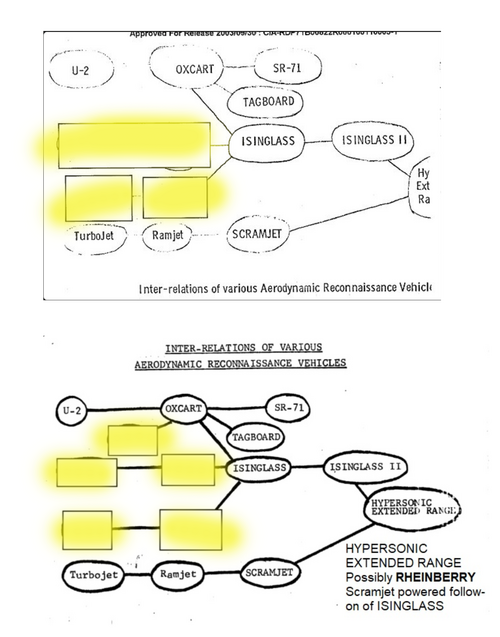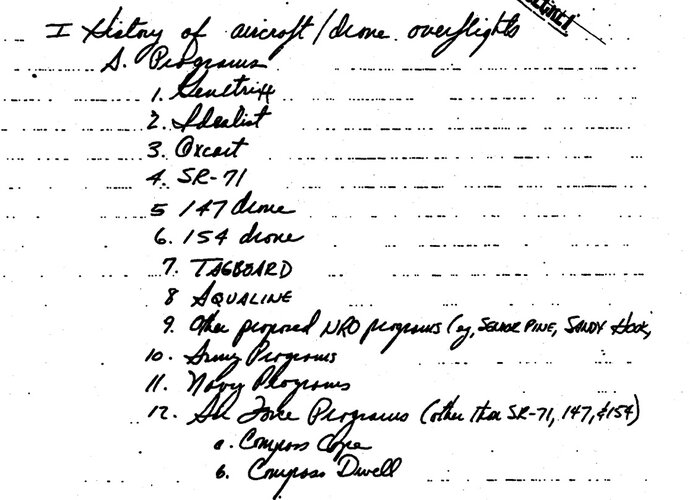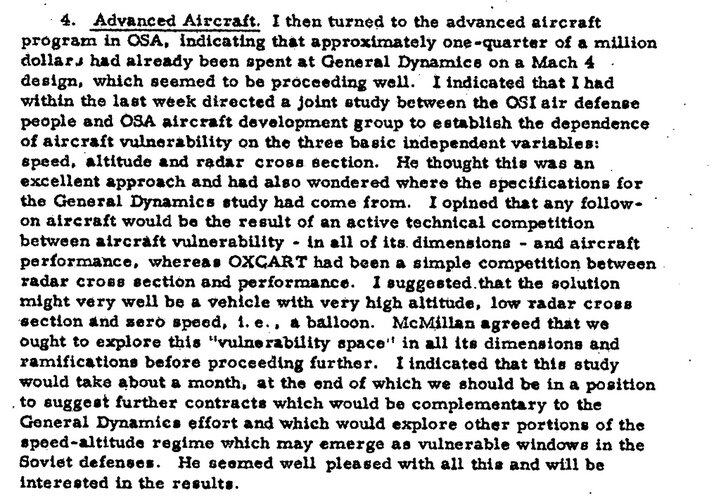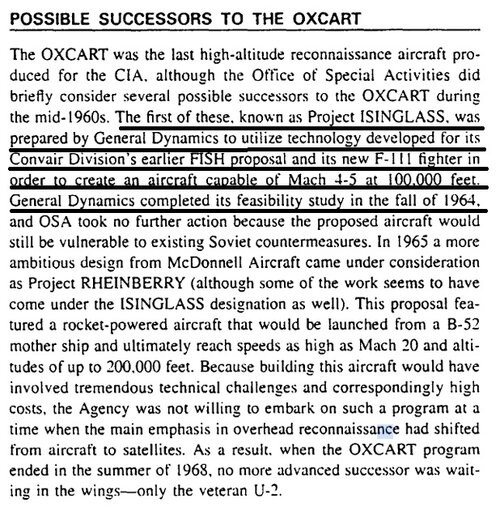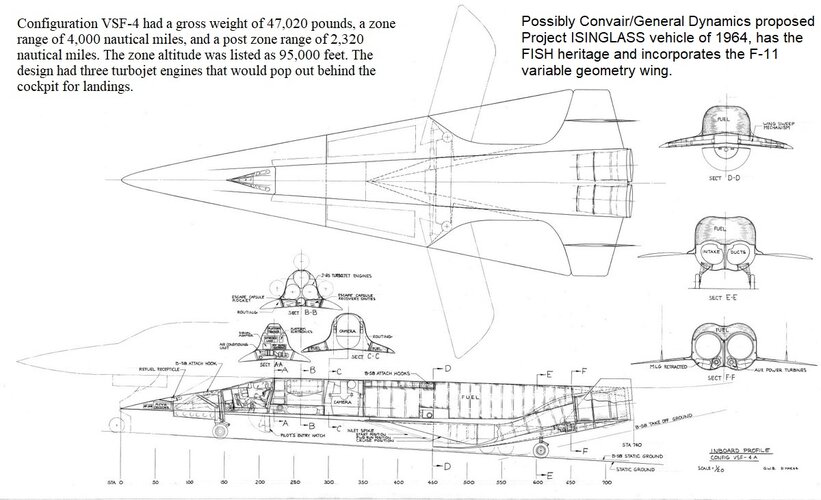1. Under consideration by the Office of Special Activities,
DD/S&T, is an Advanced Aircraft concept which features speeds
as high as Mach 20, altitudes of 200,000 feet, and a reconnais-
sance range of 6700 nautical miles. The program (code name
Project RHEINBERRY) has not been funded, nor has it formally nor has
further preliminary
studies by OSA. These studies will be in conjunction with
the DDI relative to requirements and with DD/S&T/OSI on
vulnerability aspects.
Isinglass), which considered a Mach 5-6 aircraft, flying at
110,000 feet, was considered infeasible because of vulnerability
to SA-2 and Griffon missiles.
2. The most promising concept is that proposed by
McDonnell Aircraft of St. Louis, featuring a design which
draws on that company's experience in ASSET (Aerothermodynamic
Structural Systems Environmental Tests),
the M122 Aeroballistic Missile. High temperature metals are
expected to solve heat
in the above programs
The engine proposed would be a
Pratt-Whitney advanced rocket engine using liquid hydrogen/
oxygen fuel. The feasibility of engine concept has been
proven by subscale tests of major components and with extensive
experience on the RL-10.

